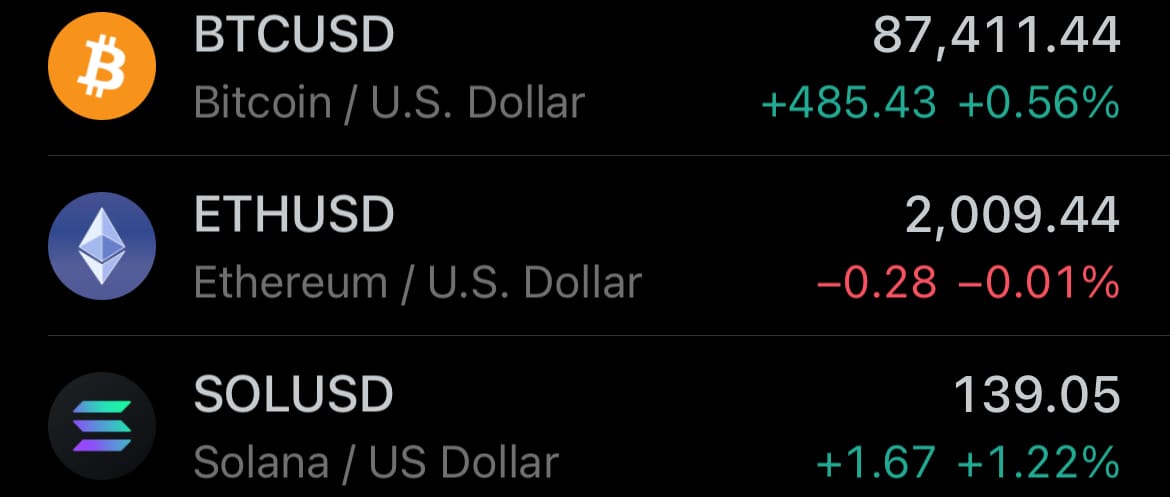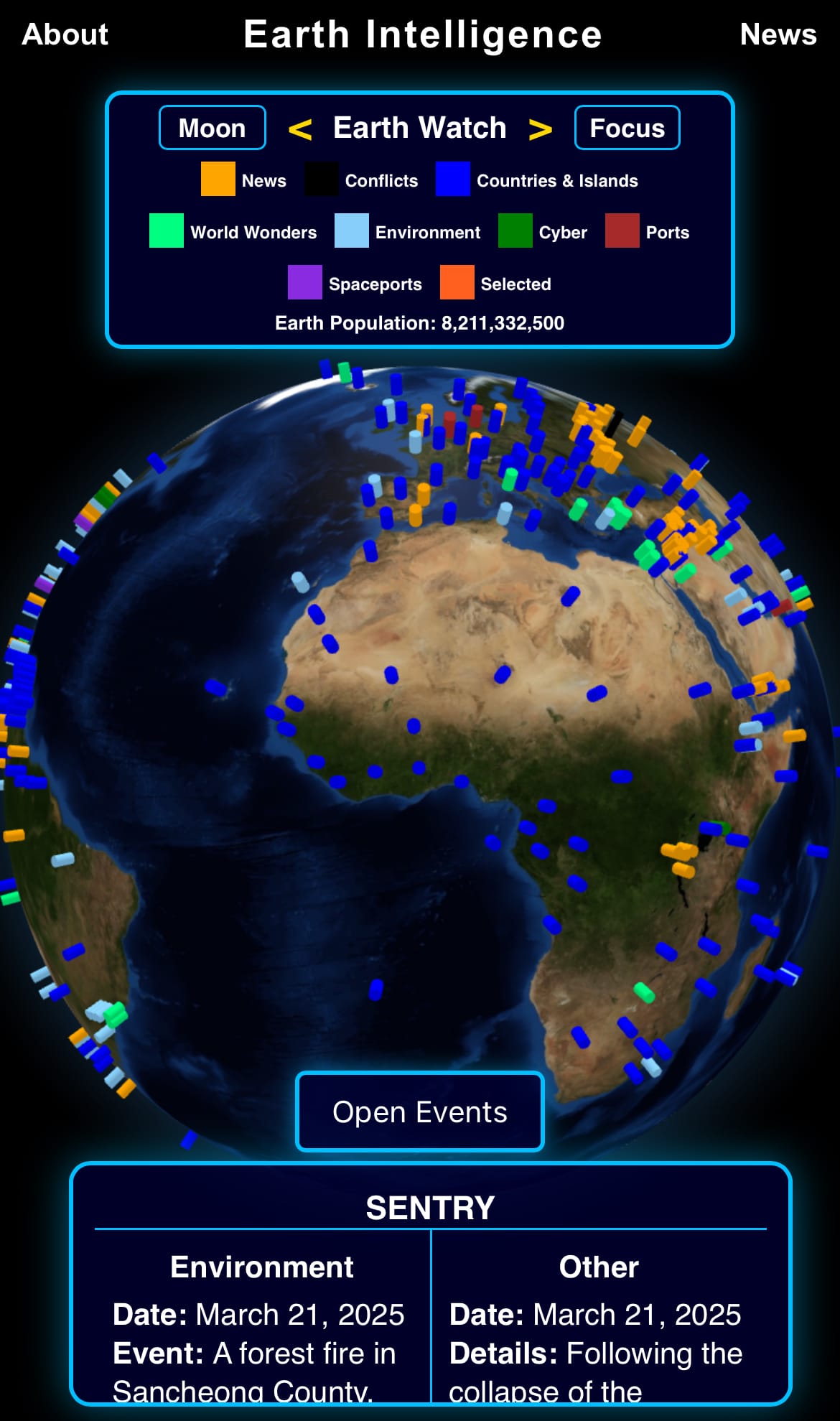Friday☕️

Trending:
- Yesterday, March 27, 2025, the U.S. Department of Justice (DOJ), alongside the FBI and other law enforcement agencies, announced the arrest of Henrry Josue Villatoro Santos, a 24-year-old Salvadoran national identified as a high-ranking leader of the MS-13 gang in the United States. The operation took place in Dale City, Virginia, where Villatoro Santos was apprehended on charges of illegal firearm possession after authorities discovered guns, silencers, and related items during a search of his residence. The DOJ described him as a key figure overseeing MS-13’s East Coast activities, marking his arrest as a significant move in efforts to disrupt the gang’s operations, which include violent crimes, drug trafficking, and extortion across multiple regions.

- The arrest stems from a coordinated effort involving federal agencies such as the ATF and ICE, as well as local law enforcement, following weeks of planning. MS-13, originally formed in Los Angeles in the 1980s by Salvadoran immigrants, has evolved into a transnational organization with strong ties to El Salvador. While the initial charges against Villatoro Santos center on firearm possession—linked to his undocumented status in the U.S.—officials have suggested that further charges could emerge as the investigation progresses. The operation reflects ongoing federal initiatives to target MS-13 leadership and address the gang’s criminal activities, which have long posed challenges to public safety in affected communities.
Economics & Markets:
- Yesterday’s U.S. stock market:

- Yesterday’s commodity market:

- Yesterday’s crypto market:

Environment & Weather:
- As of Yesterday, March 27, 2025, Mexico is facing significant flooding in several regions, with Reynosa in Tamaulipas notably impacted. Heavy rainfall has caused widespread water accumulation, affecting roads, homes, and commercial areas. Posts across social media platforms have shared images and reports of flooded streets and disrupted daily life, reflecting the scale of the situation. This event is part of a broader series of weather-related challenges Mexico has encountered over the past year, with multiple areas experiencing intense rains.

- The flooding in Reynosa aligns with a pattern of weather events seen in Mexico throughout 2024 and early 2025. Earlier instances, such as those tied to Tropical Storm Alberto in June 2024 and Tropical Storm John in September 2024, delivered heavy precipitation to regions like Monterrey and Acapulco, leading to flooded rivers and affected communities. The ongoing rainy season continues to bring precipitation across the country, with local conditions like drainage capacity and geography influencing the outcomes. Efforts are being made to manage the immediate effects as the situation develops.
Science & Technology:
- As of March 27, 2025, Grok, an AI chatbot from xAI, is now integrated with Telegram, making it available to the platform’s 1 billion monthly active users. This service is offered only to Telegram Premium subscribers, and users can find the bot by searching “@GrokAI” in the app. Grok provides a conversational style for answering questions, helping with tasks, or chatting, all within Telegram’s messaging system.
- This launch positions Grok as part of a trend of AI assistants joining messaging platforms, expanding its reach from its original setup. The Telegram version does not include features like “Think” and “DeepSearch,” which are available only in the standalone Grok app or the X platform. The collaboration reflects xAI’s aim to extend its AI’s availability and Telegram’s effort to add new features for its users, placing Grok within a competitive field that includes apps like WhatsApp and Signal.
Statistic:
- Largest public mining companies by market capitalization:
- 🇦🇺 BHP Group: $125.58B
- 🇬🇧 Rio Tinto: $101.31B
- 🇨🇳 China Shenhua Energy: $100.22B
- 🇺🇸 Southern Copper: $77.10B
- 🇨🇳 Zijin Mining: $65.72B
- 🇺🇸 Freeport-McMoRan: $57.45B
- 🇺🇸 Newmont: $54.54B
- 🇨🇦 Agnico Eagle Mines: $54.27B
- 🇨🇭 Glencore: $46.89B
- 🇸🇦 Ma’aden: $46.88B
- 🇧🇷 Vale: $43.41B
- 🇲🇽 Grupo México: $40.64B
- 🇮🇩 Bayan Resources: $40.32B
- 🇬🇧 Anglo American: $36.69B
- 🇨🇦 Wheaton Precious Metals: $34.78B
- 🇨🇦 Barrick Gold: $33.74B
- 🇦🇺 Fortescue: $31.44B
- 🇨🇦 Franco-Nevada: $30.29B
- 🇮🇳 Coal India: $28.57B
- 🇨🇦 Nutrien: $24.90B
- 🇬🇧 Antofagasta: $23.12B
- 🇷🇺 Nornickel: $22.35B
- 🇮🇳 Vedanta: $21.55B
- 🇨🇦 Teck Resources: $19.77B
- 🇿🇦 Gold Fields: $18.77B
History:
- The history of energy technology began over a million years ago with early humans’ control of fire, which provided warmth, protection, and the ability to cook food—an essential advancement for health and development. For most of human history, energy came from biomass like wood, animal labor, and human muscle. Around 3000 BCE, ancient civilizations in Mesopotamia and Egypt began using animals and simple machines to boost agriculture. Water wheels emerged in Greece by 200 BCE, and windmills appeared in Persia around 700 CE, spreading to Europe by the 12th century. These early systems enabled basic mechanical tasks like grinding grain and irrigating land. The Industrial Revolution, beginning in the late 1700s, marked a dramatic leap with the invention of the steam engine by Thomas Newcomen in 1712 and James Watt’s improvements in the 1760s. Powered by coal, steam engines drove factories, railroads, and ships. In 1859, the first commercial oil well was drilled in Pennsylvania, leading to the widespread use of internal combustion engines by the late 19th century. Electricity emerged in the same period—Edison launched the first power station in 1882, and Tesla’s alternating current systems made it practical for long-distance use. By the mid-20th century, nuclear fission added a new energy source, with the first commercial plant opening in the USSR in 1954. These developments created the fossil fuel-dominated global energy infrastructure that still powers much of the modern world.
- In the late 20th and early 21st centuries, environmental concerns, resource limitations, and technological progress accelerated the development of cleaner and more efficient energy systems. Solar photovoltaic cells, first created in the 1950s, became commercially viable in the 2000s thanks to improvements in efficiency and large-scale production, particularly in China. Wind energy followed, with modern onshore and offshore turbines supplying a growing share of global electricity. Lithium-ion batteries, introduced in 1991, enabled energy storage at scale and fueled the rise of electric vehicles. Despite this progress, fossil fuels still provide over 75% of global energy as of the 2020s. To reduce emissions while maintaining reliability, new technologies are emerging—Small Modular Reactors (SMRs), molten salt reactors, and thorium-based systems aim to revive nuclear with safer, more flexible designs. AI and smart grid systems now help optimize how power is produced, stored, and distributed. The most ambitious breakthrough on the horizon is nuclear fusion, which mimics the sun’s energy process. In 2022, researchers at Lawrence Livermore National Laboratory achieved net energy gain in a fusion experiment for the first time. Major projects like ITER in France and private startups are working to make fusion a commercial reality, potentially unlocking a future of virtually unlimited, clean energy. Together, these advances are shaping a more diverse, resilient, and sustainable global energy system.
Image of the day:

Thanks for reading!
Earth is complicated, we make it simple.
Click image to view the Earth Intelligence System:



Support/Suggestions Email:
earthintelligence@earthintel.news




